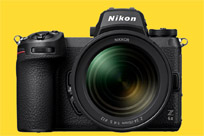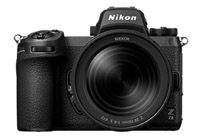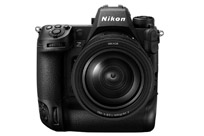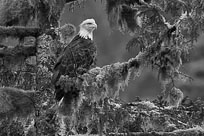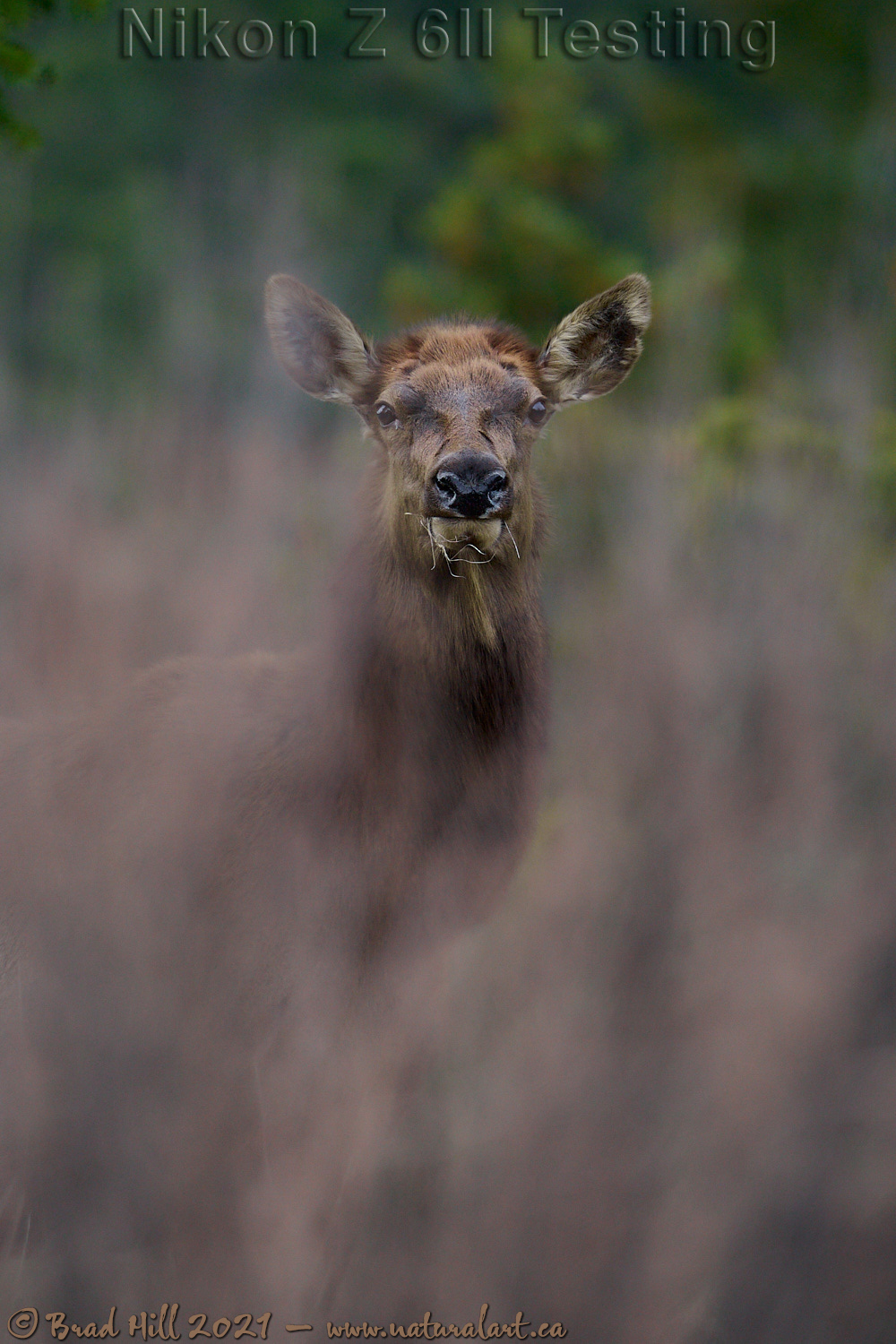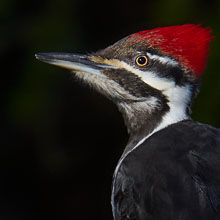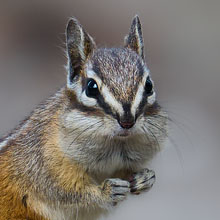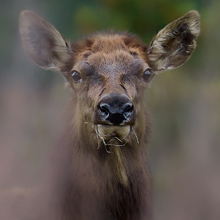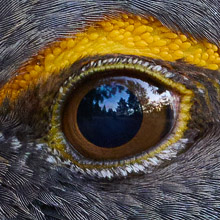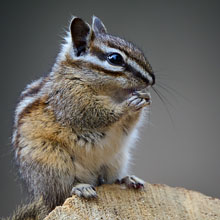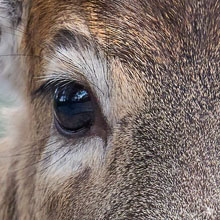Availability: Undetermined - Enquiries?
In the Field
Z 6II Testing - Shooting Through the Gap! Findlay Creek Region (East Kootenays), British Columbia, Canada. April 1, 2021.
This is my third gallery post and commentary conveying my experiences with shooting wildlife using the Nikon Z 6II.
I captured this female Elk image just slightly before the sun came over the mountains east of our cabin in the East Kootenays of BC. At the time I was out for a sunrise "camera walk" on our acreage and was carrying only my Z 6II with a Nikkor 500mm f5.6E PF lens mounted on it (plus two TC's in pouches on a hip belt). This was a chance encounter and the Elk (as well as about 5 others) just happened to be behind bushes or trees and I walked in quite close to them before even knowing they were there. Almost miraculously, the position of all the Elk prevented them from seeing me...so I saw them (or at least this one) before any of them saw me and took off. I actually saw the creamy-colored rump patch on this one first (it was behind a bush that covered most of it, and it had its head down as it munched on some grasses to eat). I instantly froze and raised my camera waiting for the Elk to raise its head. And, seconds later, it did - and gave me this full-on stare (with ears directed towards me to pick up any sound). I knew if I budged even a smidgen the Elk would know I was something to be wary of and bolt. Fortunately, as soon as I raised my camera I switched it to "Silent photography" mode (I have this option in my iMenu and so I was able to toggle to it with my eye watching the subject through the viewfinder and without the Elk seeing my thumb work the menu on the backside of the camera). So I was able to shoot while the Elk was staring me down without it hearing the shutter. And this stand-off went on and on (and on) - to me seemed like an hour, but it was probably only 3 or so minutes long. Eventually the cow Elk decided I must have been an upright stump with a funny, single, shiny eye and it went back to foraging. Thankfully the lens I was hand-holding was the incredibly light (for a super-telephoto) 500mm f5.6E PF...there's NO WAY I could have held a "standard" super-telephoto lens with close to zero movement or shaking as long as I needed to in this case.
At least two very positive aspects of the Z 6II allowed me to capture this image (and all the others in the sequence). I've already alluded to the first - having a fully silent shutter mode...along with the ability to quickly and easily switch to it. If I was shooting a DSLR (even in "Quiet" mode) I would have been only been able to capture one shot of this Elk - that is, the first one...the remaining ones would have been butt shots of it running off. One thing I should point out is that when you are shooting in "Silent photography" mode (i.e, using the fully electronic shutter) the camera isn't 100% silent...if you're REALLY listening, and if ambient noise levels are super low, you can hear a very faint sound each time the shutter triggers. And, if you are using an F-mount lens attached to the camera with an FTZ mount adapter, the shutter sound is SLIGHTLY more audible. But...it's still incredibly quiet and in this real world "field test" of its effectiveness, the cow Elk clearly did not hear it.
The second aspect of the Z 6II that assisted me in capturing this shot pertains to the design of its AF system. It should be clear to most viewers that to capture this shot I was actually shooting through a bunch of woody stems of a bush (a Buffaloberry bush for those who might care!) and focusing on the the area JUST above the nose pad. Fortunately, I had a small gap to focus through. Now a bit of background here. I am a "compose first and then move (or toggle) the focus point to where I want" style of shooter (as opposed to a "focus first, lock focus, and recompose" shooter). So I toggle my focus point around a LOT...and I often have to toggle that focus point around very quickly. I also like very small focus points for two reasons: I'm picky about the EXACT spot I focus on, and I often have to focus between foreground obstructions...and having small focus points help me in both of these regards.
Shooters who own both a Z 6 or Z 7 (of either generation) will know that the focus points on the Z 7 are noticeably smaller than on the Z 6. This makes total sense in that they cover the same total area on the sensor, but there are 220 more points on the Z 7 than the Z 6 (493 points vs. 273 points). So...if you think about it, there's a bit of trade-off for someone like me with focus point size - if you like really small focus points there are MORE of them, so while you can precisely position the smaller points (or shoot "through" obstructions with very small gaps in them), it takes a whole lot longer to toggle the focus points around.
I have to say that "out of the box" (i.e., using default settings) I prefer the "balance" of focus-point size, focus point number, and toggling speed of the Z 6II over the Z 7II for my wildlife photography. BUT...you CAN set up your Z 7II for a "best of both worlds" experience - Custom setting A4 on both cameras can be set to ALL (meaning ALL focus points are used) or to 1/2 (meaning every other point is used). So with my Z 6II I use all the focus points and with my Z 7II I use 1/2 the focus points - and both cameras then allow me to toggle the focus point around fast!
I'm aware that focus point size, focus point number, and focus point toggling speed aren't things that get talked up much in camera reviews or by photography gear "pundits". And they certainly aren't as sexy to pontificate about as something like AF "tracking". But, for me, day-to-day they are incredibly important issues - and way more important to me than focus tracking. The more I shoot wildlife with my Z 6II and my Z 7II (over a variety of lighting conditions, over a huge range of distances-to-subject, with both 1.4x and 2x teleconverters, etc.) the MORE I am blown away by the AF accuracy and overall AF capabilities of these cameras. Yes, if I am shooting extreme action I want my D6 in my hands. But for virtually ALL the rest of my wildlife photography (which means about 95% of my shooting) - I'll opt for the AF capabilities and performance of the Z 6II and Z 7II over that of the D6. Really.
Here's a larger version (2400 pixel) of this very, very focused Elk:
• Shooting Through the Gap! Download 2400 pixel image (JPEG: 1.0 MB)
ADDITIONAL NOTES:
1. This image - in all resolutions - is protected by copyright. I'm fine with personal uses of them (including use as desktop backgrounds or screensavers on your own computer), but unauthorized commercial use of the image is prohibited by law. Thanks in advance for respecting my copyright!
2. Like all photographs on this website, this image was captured following the strict ethical guidelines described in The Wildlife FIRST! Principles of Photographer Conduct. I encourage all wildlife photographers to always put the welfare of their subjects above the value of their photographs.
Behind the Camera
Z 6II Testing - Shooting Through the Gap! Findlay Creek Region (East Kootenays), British Columbia, Canada. April 1, 2021.
Compressed RAW (NEF) 14-bit format; ISO 800.
Nikon Z 6II paired with Nikkor 500mm f5.6E PF. Hand-held. VR on and in Sport mode. Single Point Area AF area mode. Silent photography mode "on" (full electronic shutter used).
1/100s @ f5.6; -0.3 stop compensation from matrix-metered exposure setting.
At the Computer
Z 6II Testing - Shooting Through the Gap! Findlay Creek Region (East Kootenays), British Columbia, Canada. April 1, 2021.
RAW Conversion to 16-bit PSD file (and JPEG files for web use), including all global and selective adjustments, using Phase One's Capture One Pro 21. Global adjustments were limited to a slight tweak (a reduction) to the Brightness. Selective local adjustments performed using Capture One Pro's layers and masking tools. In this case selective adjustments were made on 8 separate layers and included one or more tweaks to color (using both the Color Balance tool and the Color Editor), clarity, blacks, and sharpness.
Photoshop modifications were limited to the insertion of the watermark and/or text.
Conservation
Z 6II Testing - Shooting Through the Gap! Findlay Creek Region (East Kootenays), British Columbia, Canada. April 1, 2021.
Species Status in Canada*: This species is not designated as at risk.
Elk (Cervus elaphus) are the second largest member of the deer family in British Columbia (and in North America). Rocky Mountain Elk (of the Cervus elaphus nelsoni subspecies) like to forage in a mix of grasslands and shrublands or in mixed coifer and deciduous forests. Elk are highly social mammals and their herding behaviour is thought to be an anti-predator strategy - with more eyes watching each individual Elk can spend a greater proportion of their time foraging. In British Columbia wolves are the main predators of all age and sex classes of Elk. Cougars will also prey on Elk of all ages, and both Grizzly and Black Bears prey primarily on the young of the year.
Elk are now common again in much of western North America - in fact Elk now are found in more habitats and in higher numbers (approaching a million animals) than any other time since 1900. The future on Elk populations in North America seems secure.
*as determined by COSEWIC: The Committee on the Status of Endangered Wildlife in Canada







